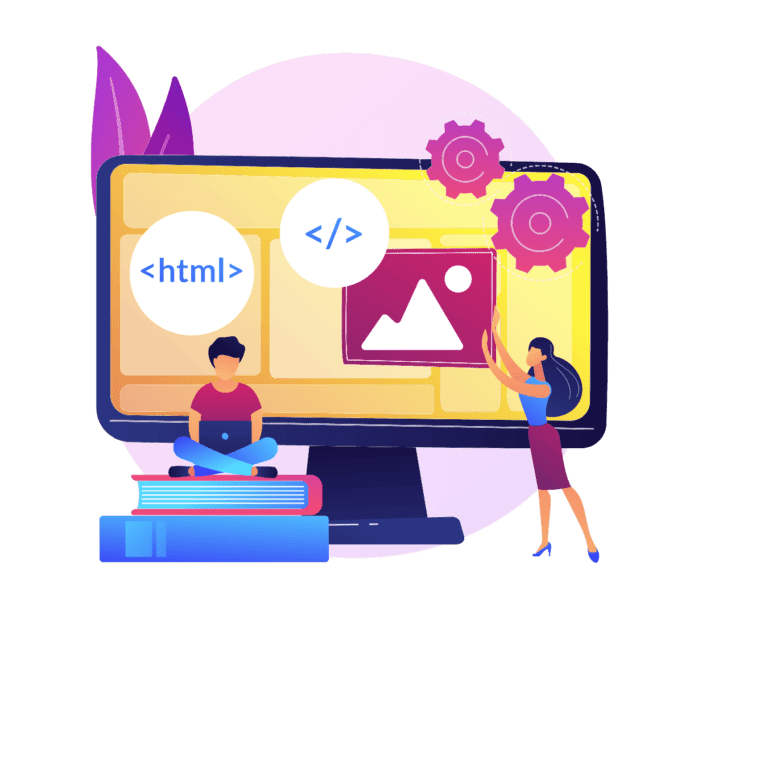
Developing Your Structure: On-Page SEO
Lorem ipsum dolor sit amet, consectetur adipiscing elit. Ut elit tellus, luctus nec ullamcorper mattis, pulvinar dapibus leo.
The Cosmetic Interior of your digital house
If you’ve been following along with my Building Your Digital House: A Comprehensive Introduction to SEO blogs, then you’ll understand the name of this post.
On-page SEO is like constructing the walls, windows, and interiors of your home. It involves optimizing individual webpages to rank higher and earn more relevant traffic in search engines.
In this guide you’ll learn:
- What on-page SEO is and why it’s important
- Key elements of on-page SEO in 2024 and how to fix them
- Best practices and on-going maintenance tips
What is On-Page SEO?
Unlike technical SEO, which focuses on backend aspects of a site, on-page or on-site SEO is concerned with the elements directly visible on your pages. It encompasses everything from content and keywords to HTML tags and multimedia. Here are some core areas:
- Internal Linking: Helps distribute page authority and guide visitors through your site.
- Content Quality: Unique and relevant content is vital for engaging visitors and search engines.
- Title Tags and Meta Descriptions: Craft compelling titles and descriptions to improve click-through rates.
- Header Tags and Keyword Optimization: Use headers and keywords effectively to enhance readability and relevance.
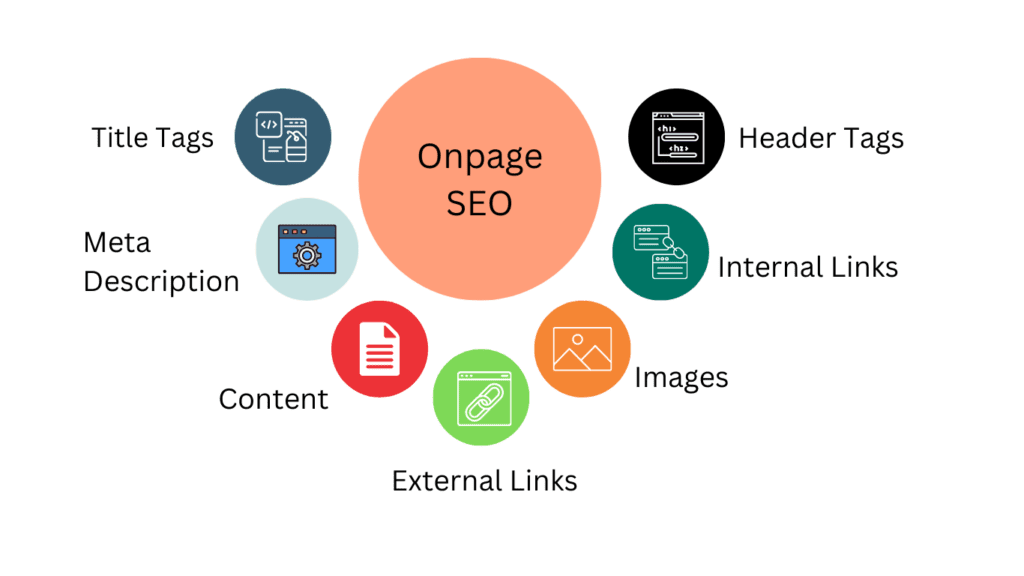
Why is on page SEO important?
A well-structured site with quality content ensures that your pages are valuable to users and search engines alike.
Yes, making search engines happy is important, but at the end of the day search engines will always put their users first. On-page SEO makes sure that your webpages are not only search-engine friendly but also user-friendly. Effective on-page SEO helps search engines understand what each page is about and checks that your content aligns with user search intent. Google prioritizes high-quality, relevant content that satisfies user queries, making on-page optimization crucial for improving rankings and attracting organic traffic. It also helps establish your site’s relevance and authority on specific topics, which is as important to potential customers.
Key On-Page SEO Techniques
Below is a list of important factors for on-page SEO in 2024. By optimizing each element listed, you’ll create a compelling, user-friendly experience that aligns with search engine algorithms and attracts more organic traffic.
Related Resources
- Our Keyword Methodology (coming soon)
Researching and Determining Keywords
One of the first things you should do is determine which keywords are important to your business and conduct keyword research.
Keyword research is a foundational element of SEO and digital marketing as it helps identify the terms and phrases your target audience uses when searching for information related to your business or industry. By understanding these search behaviors, you can tailor your content to better meet the needs of your audience and improve your visibility in search engine results. Effective keyword research enables you to discover new opportunities, align your content strategy with user intent, and ultimately attract more qualified traffic to your website.
Every company should have a long-term and short-term keyword strategy. Initially, you should start by looking at keywords that you’re already ranking for as they will be the quickest wins.
How to conduct keyword research
The best way to conduct keyword research involves a structured approach, focusing on identifying a comprehensive list of relevant keywords and evaluating their potential impact. Here are several steps to guide you through this process:
Identify Your Seed Keywords
Start with broad terms related to your business and industry. These will act as the foundation for your research, helping you explore more specific variations and topics.
Use Keyword Research Tools
Use SEO tools to find keywords with high search volume and manageable competition. Focus on both high-volume keywords and less competitive long-tail keywords for balanced targeting. Here are the tools I recommend depending on budget.
- Keyword Planner – Free Google tool offered through PPC
- UberSuggest – least expensive, great for beginners
- Ahrefs – Pricier, my personal favorite
- SEMRush – Most expensive option
Analyze Search Intent
Understand the purpose behind a user’s search by categorizing keywords into informational, navigational, transactional, or commercial investigation intents. This will help tailor your content to address specific needs.
Evaluate Keyword Difficulty
Assess how hard it would be to rank for particular keywords by analyzing the strength of current competitors and the quality of their content.
Long-Tail Keywords
Focus on long-tail keywords, which tend to have lower search volumes but are usually less competitive and more targeted, potentially leading to higher conversion rates.
Review Competitors
Analyze what keywords competitors are ranking for, as this could reveal gaps in your own strategy or new opportunities to explore.
Prioritize and Refine
Based on relevance, search volume, and competition, prioritize your list of keywords. Refine your selection by focusing on those that best fit your content strategy and business goals.
Repeat The Process If Needed
By systematically following these steps, you can develop a robust keyword strategy that optimizes your content, targets the right audience, and enhances your site’s performance in search engine results. Regularly revisiting and updating your keyword research is also important to adapt to changing market trends and user demands.
Write Unique, Helpful Content
Content Quality
Per Google, your content should be original, valuable, and tailored to your audience’s needs. Start by conducting keyword research to identify relevant topics and phrases that resonate with your target audience.
Content Creation
Content should be created for each part of your buyers journey and/or sales funnel. Although there are more stages AFTER the purchase, when it comes to the buyers journey you have:
- Awareness Stage (Figuring Out Pain)
- Consideration Stage (Aware of the solution)
- Decision Stage
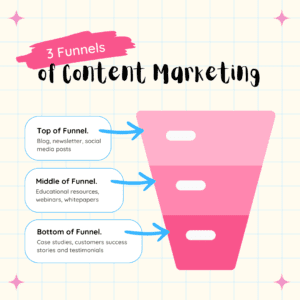
Ensure that your content answers users’ questions and issues at each stage, comprehensively, and offers something unique compared to competitors. Avoid keyword stuffing; instead, incorporate keywords naturally within the content.
Place Target keywords strategically
Determine Optimal Placement
Each page on your website should have 1-2 target keywords and a cluster of halo keywords, which are related or long-tail keywords. For example, say you search for the American flag — Google is going to pull results that talk about the 50 states, the stripes, the colonies, etc etc.
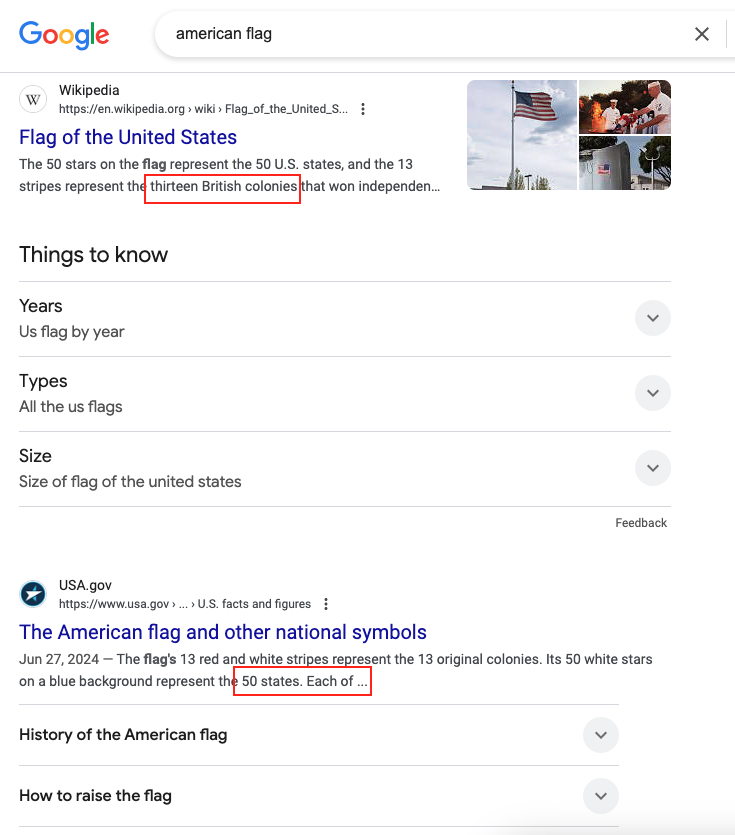
Include your primary keywords in essential areas such as the H1 tag, the first paragraph, and subheadings (H2s, H3s, etc.). This helps users and search engines understand the context and relevance of your content.
Avoid Keyword Stuffing
Use keywords in a way that feels natural and relevant to the content, enhancing readability and user experience.
Title Tags are prime real estate
Title Tags
These are HTML elements that define the title of a webpage. They appear on search engine results pages (SERPs), social media, and browser tabs. Title tags are prime real estate for your users so use them wisely!
Best Practices
Keep title tags between 50-60 characters, include target keywords (ideally at the beginning), and ensure each page has a unique title. This helps both search engines and users understand what the page is about and encourages clicks.
Write Click-Worthy Meta Descriptions
Meta Descriptions
These HTML elements provide a summary of a page’s content. Although they don’t directly impact rankings, they influence click-through rates (CTR) by enticing users to click on your result.
Crafting Meta Descriptions
Keep them concise (around 150-160 characters), include target keywords, use active voice, and add a compelling call-to-action (CTA).
Use Headings and Subheadings to Structure Your Page
Properly use H1, H2, H3, etc., to organize content and make it easier for both users and search engines to navigate.
Headings improve readability, help Google understand the content hierarchy, and enhance user experience by making information easier to find.
Strategically Add Internal Links
Internal Linking Best Practices
Internal linking are links that direct users to other pages within your site. They help search engines discover new pages, establish the importance of pages, and improve site navigation.
Use descriptive anchor text and ensure that internal links are relevant and add value to the user experience.
Add External Links to Authoritative Sources
External Linking Best Practices
Links that direct users to other websites. Linking to authoritative and relevant sources can enhance the credibility of your content and provide additional value to users.
Link to reputable sites, use natural anchor text, and maintain a balance to avoid appearing spammy.
Include and optimize images
Images enhance content but need to be optimized for performance and SEO.
Use descriptive file names, compress images to improve load times, and implement lazy loading to delay image loading until needed.
Alt and image Text
Write descriptive alt text for each image to provide context to search engines and assist users with screen readers. Avoid keyword stuffing and focus on clarity.
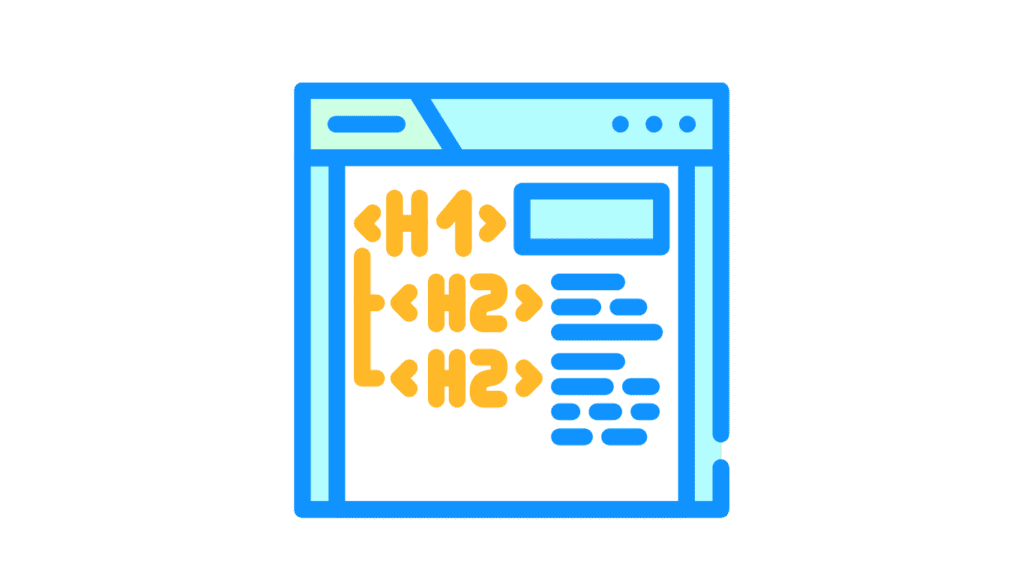
Advanced On-Page SEO Tactics
This next group of optimizations should be done by an expert developer with a proven track record of correctly implementing these strategies.
Target Featured Snippets
Featured snippets are special search results that appear above the regular SERPs. They include definitions, lists, tables, and other formats.
Featured Snippet Strategies
Provide clear, concise answers to common questions, format your content for featured snippets, and aim to satisfy user search intent directly.
Add Schema mark up
Schema Markup: Structured data that helps search engines understand the content of your pages. It can enhance search results with rich snippets.
Common Schema Types
Common schema types Include schema for reviews, products, events, and local businesses. Use tools like Google’s Structured Data Testing Tool to ensure proper implementation.
Quick Ways to Improve On-Page SEO
Recap
I won’t beat a dead horse here, but below are the quickest ways to improve your on-site SEO.
- Craft Unique, High-Quality Content
- Optimize Title Tags, Meta Descriptions, and Headers
- Implement a Logical Internal Linking Structure
- Ensure Mobile-Friendliness
Implement Proven On-Page SEO Techniques
Now that you’re familiar with essential on-page SEO techniques, it’s time to put these strategies into practice. Regularly audit your pages, refine your content, and stay up to date with SEO best practices to maintain and improve your search engine rankings.
By optimizing each element of your webpage, you’ll create a compelling, user-friendly experience that aligns with search engine algorithms and attracts more organic traffic.


